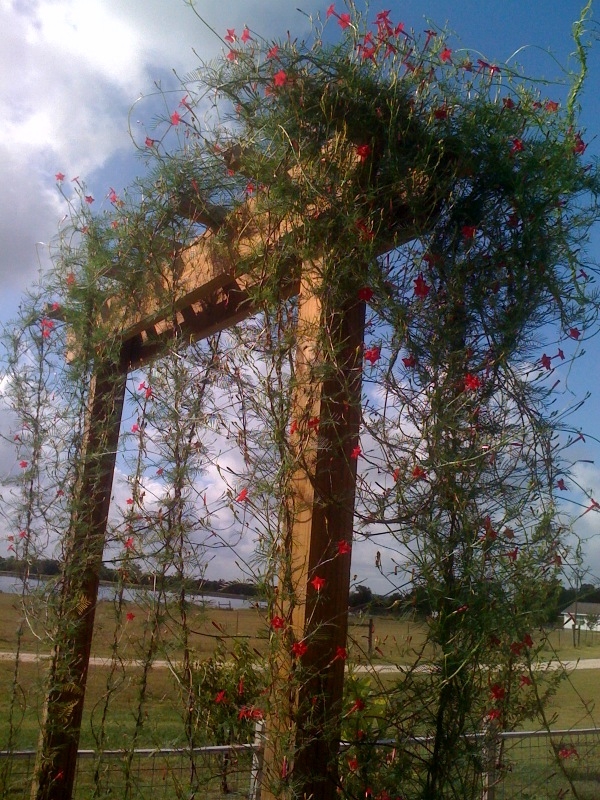For me, growing new things is a big part of the fun in gardening. Each year, I like to try at least one new vegetable and one new flower. Sometimes the new things work out and sometimes they don’t. This year, one of my flower experiments has yielded a keeper: Love-Lies-Bleeding (Amaranthus caudatus).
Love-Lies-Bleeding (and all amaranths for that matter) is easy to grow, tolerant of poor soils and incredible to look at. In less than three months, mine have gone from seed to eye catching three foot tall plants covered in long red inflorescence that cascade almost down to the ground. These plants have been grown for ornamental purposes for a very long time. A. caudatus was included in a plant survey found in Colonial Williamsburg and it was very popular in Victorian English gardens.
Love-Lies-Bleeding is member of the amaranth family. Amaranths are a diverse species with plants whose foliage and inflorescence range from yellow to red to deep purple. In addition to producing very showy inflorescence, amaranths are edible. Both the leaves and the seeds are harvested as food all over the world. The leaves are used much like spinach and the seeds are used as grains. However, since amaranths are not in the grass family, their seeds are gluten free. Amaranth was a very important crop for both the Aztecs and the Inca. To this day, the seeds are still “popped” like popcorn, mixed with honey, molasses or chocolate and sold as snacks on the streets of Mexico.
The botanical name of Love-Lies-Bleeding derives from Greek and means “unfading flower”. This is an accurate description as the flowers are very long lasting cut flowers and they can be easily dried to extend the amount of time that you get to enjoy them. For fresh flower arrangements, cut amaranths when ¾ of the flowers are open on the stem. They will last 7-10 days in a vase. If you want to dry them, harvest when the seed begin to set and the flowers are firm to the touch. Cut and hang upside down for at least 10 days. This is great for Texas as high heat during the drying process allows the flowers to better retain their color.
Love-Lies-Bleeding is easy to grow and extremely well suited for our hot Texas climate. Plant seeds when the soil is around 70 degrees. It is tolerant of both drought and poor soils. In fact, too much nitrogen and the flowers will not be as bright. Give it too much water and the plants may break. Water deeply but infrequently. It does not like wet feet. Once it sprouts, thin to about 18” since it is not uncommon for these plants to reach five feet in height and spread to over two feet.

This is what the flower head looks like two weeks after the first picture was taken. Notice how the flower color has begun to fade. The soil in my potager has too much nitrogen for this plant that loves marginal soils.
Like all things that are easy to grow, Love-Lies-Bleeding does have its problems. Since each plant can produce over 100,000 seeds, it can be a bit invasive (it is in the same family as pigweed). However, when young, the plants have a shallow root system and are very easy to pull. And, since I know I am going to have to pull weeds anyway, I might as well pull something that will grow into a beautiful plant if I miss it!






